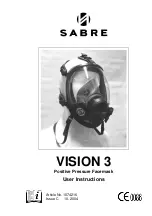
F-900 Instruction Manual 8/14/2017
1554 NE 3
rd
Ave, Camas, WA 98607, USA Phone: (360) 833-8835
74
www.felixinstruments.com
measured must have come from the sample. Chamber Out is also commonly
used with KMnO
4
to calibrate the zero of the ethylene sensors.
12. During a monitoring experiment, will the sealed fruit chamber influence the result as
time goes on?
a. The air should be scrubbed by enabling conditioning Chamber Out (filled with
potassium permanganate). Attach the tubing from the wand that returns to
the fruit chamber to the Out port on the front of the F-900.
13. Where are temperature and humidity measured?
a. The temperature and relative humidity sensors are located inside the F-900,
before the electrochemical sensor. There is an additional relative humidity
sensor after the ethylene sensor to help track water loss.
14. What is the emission rate of ethylene from the fruit, taking into account the weight of
the fruit (or sample) and the time measured?
a. Flow rate: 0.2L/min = 12.0L/hr
Sensitivity of C
2
H
4
PPM sensor to C
2
H
4
: 0.1 µL/L or 100 nL/L
Therefore, the F-900 optimally detects around 1200 nL/hr. The unit is
nanoliters of ethylene per gram fresh weight per hour.
15. What types of tubing materials have been found to outgas?
a. Several types of material have been found to outgas interfering gases of the
ethylene sensor, such as Tygon.
Viton
and
Teflon
have successfully been
found to not outgas.
Содержание F-900
Страница 2: ......
















































